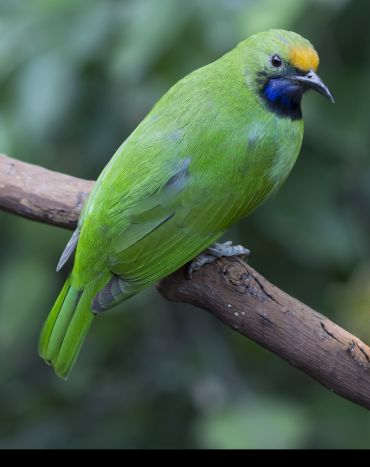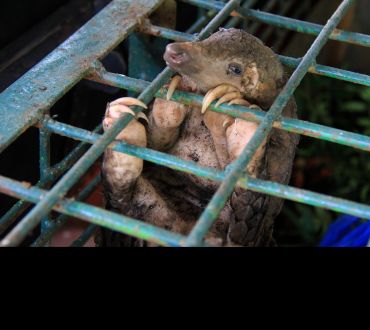
More than 900 at-risk animal and plant species not covered by global trade protections, new research shows
A new study has revealed that two-fifths of species likely threatened by the international wildlife trade are not covered by the global agreement that regulates it. This includes 370 species that are Critically Endangered or Endangered on the IUCN Red List of Threatened SpeciesTM.
 The Greater Green Leaf Bird, a species likely threatened by international trade but not included in trade protections. Image credit: Shutterstock.
The Greater Green Leaf Bird, a species likely threatened by international trade but not included in trade protections. Image credit: Shutterstock.The study, published in the journal Nature Ecology and Evolution, was conducted by a team of ecologists and wildlife trade experts at the University of Oxford, the International Union for Conservation of Nature (IUCN), the UN Environment Programme World Conservation Monitoring Centre (UNEP-WCMC) and the Zoological Society of London (ZSL).
The researchers used the IUCN’s Red List of Threatened Species – the most authoritative global source on at-risk animals and plants – to identify species likely threatened by international trade. They then compared these findings with the species of animals and plants included in the international wildlife trade protections set by the Convention on International Trade in Endangered Species of Wild Fauna and Flora (CITES). Around 40,000 species are currently included in the CITES Appendices.
In total, the results identified 2,211 species that are likely to be threatened by international trade. Of these, 904 are not included in current CITES protections. These include hundreds of fish and flowering plants, besides many species of birds, reptiles and amphibians.
 Pangolins were among the species identified as likely threatened by international trade, despite being included in current trade protections. Image credit: Shutterstock.
Pangolins were among the species identified as likely threatened by international trade, despite being included in current trade protections. Image credit: Shutterstock.The analysis also identified 1,307 species that are likely to be threatened by international trade, despite being included within current CITES protections. This indicates that these species may require increased scrutiny to determine whether there are sustainability issues that may merit tighter controls through CITES provisions, as well as other measures. These species include 671 that are facing an extremely or very high risk of extinction, such as pangolins, the European eel, and various orchids.
International wildlife trade protections set by CITIES are periodically decided by signatory countries – termed “Parties to the Convention.” To date, there has been no robust, repeatable methodology to inform this listing process. The researchers are now calling for their findings and methodology to be used to inform Parties about species that may merit consideration for potential listing proposals at future CITES meetings.
Importantly, the results are also not limited to identifying species in need of greater trade regulation. Equally, they can inform the relaxation of trade controls for species that have improved in status and can potentially be traded sustainably.
 Dr Dan Challender.
Dr Dan Challender.
‘Cross-referencing data from the Red List with CITES listing information brings these potential protection gaps to light, and I hope that Parties to the Convention will use our methodology to inform their decisions in the run-up to and during the next CITES Conference of Parties, currently scheduled to take place in 2025.’
Kelly Malsch, UNEP-WCMC’s Head of Nature Conserved and study co-author, said: ‘To achieve the aims of both CITES and the new Global Biodiversity Framework on tackling nature loss, it is vital that the international trade in animal and plant species is both sustainable and does not threaten the survival of the species in the wild.’
‘Our work identifies hundreds of species – including 370 Critically Endangered and Endangered species – in need of protections, and we also know data gaps mean the true figure could be much higher. We hope that CITES Parties will be able to use our new methodology in future to ensure that CITES listings are based on the best available science.’
The study ‘Identifying species likely threatened by international trade on the IUCN Red List can inform CITES trade measures’ has been published in Nature Ecology & Evolution.
 New Year Honours 2026
New Year Honours 2026
 New study estimates NHS England spends 3% of its primary and secondary care budget on the health impacts of temperature
New study estimates NHS England spends 3% of its primary and secondary care budget on the health impacts of temperature
 International collaboration launches largest-ever therapeutics trial for patients hospitalised with dengue
International collaboration launches largest-ever therapeutics trial for patients hospitalised with dengue
 Oxford-built multi-agent assistant for cancer care to be piloted in collaboration with Microsoft
Oxford-built multi-agent assistant for cancer care to be piloted in collaboration with Microsoft